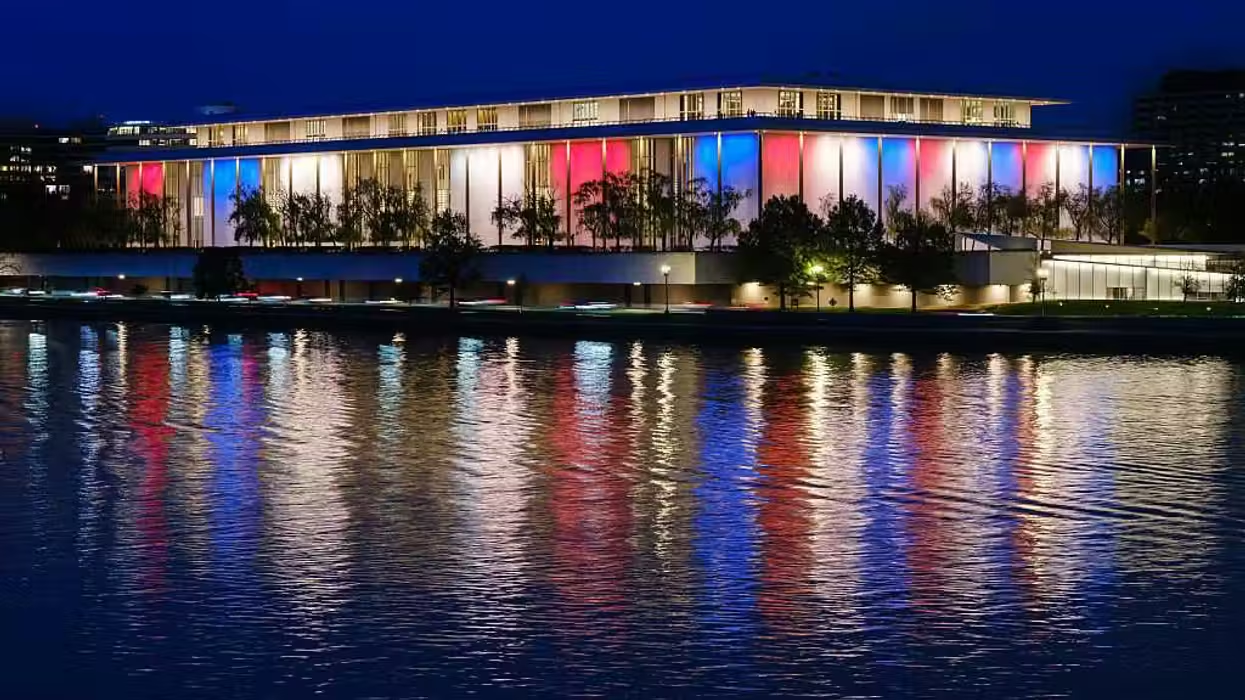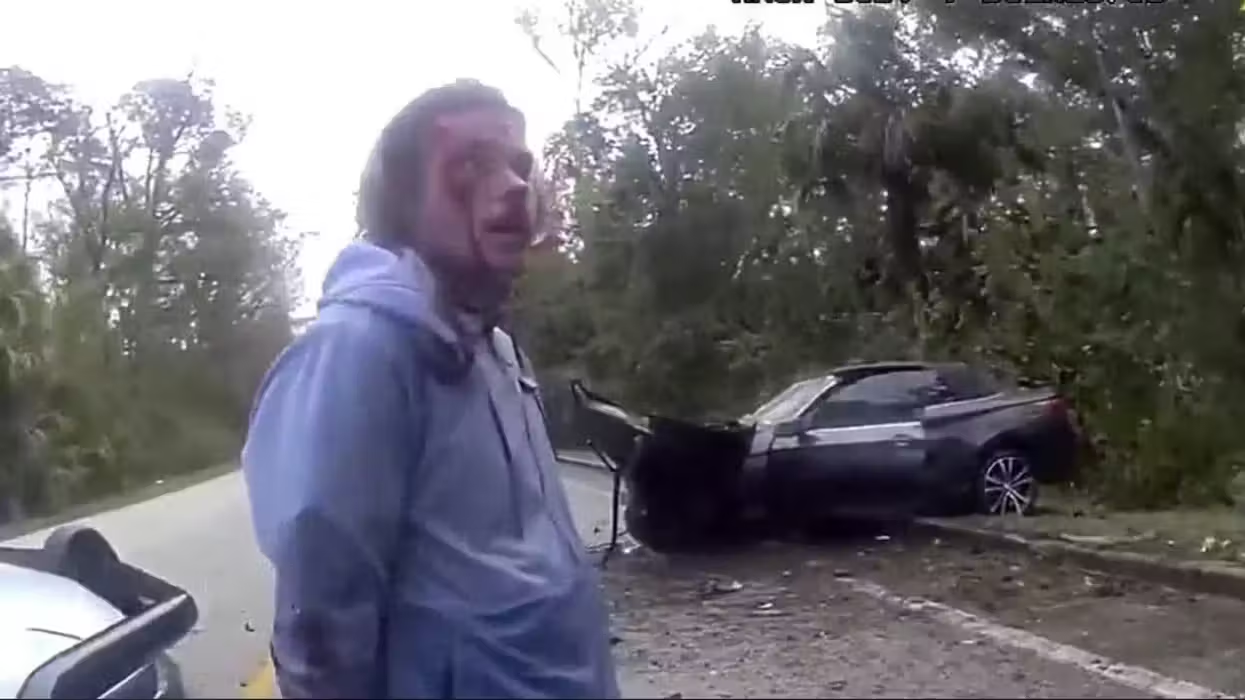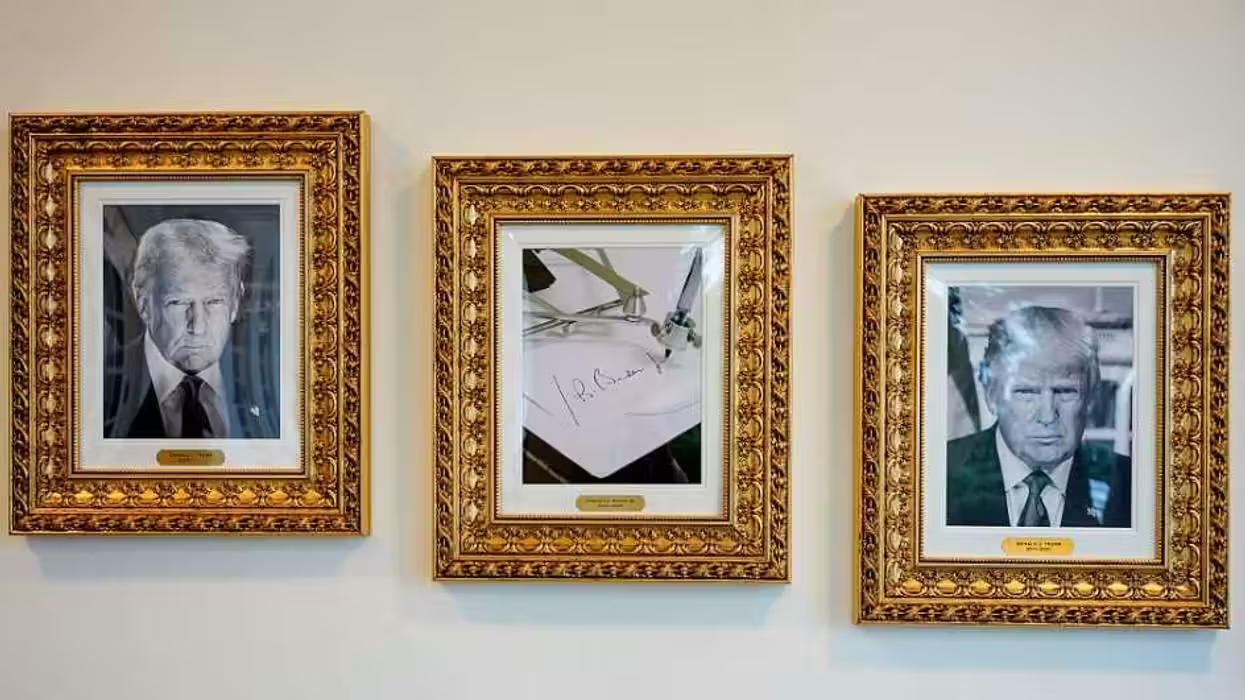
© 2025 Blaze Media LLC. All rights reserved.
What Is Going in This Amber-Coated Time Capsule Not to Be Opened for 1 Million Years?
December 24, 2012
While traces of other civilizations are left behind and unearthed hundreds and thousands of years later by archaeologists, one artist is planting a time-capsule specifically made for someone in the future to find -- far in the future.
Choosing 18 artists -- whether they specialists in the written word, photography, architecture or mathematics -- John Paul Robinson, a Canadian artist himself, is creating a replica of each of their works on a ceramic disk, casing it in resin and placing it in a wooden box that will be put in the ground come spring.
 (Image: Amber Archive)
(Image: Amber Archive)
In an interview with TheBlaze, Robinson said this isn't the sort of time capsule to be opened in the next 50 years or even the next 100. He's shooting for at least 1 million years in the future, when the resin will have fossilized into amber. Hence the name for the Amber Archive Art Project, which Robinson's website describes as "reverse archaeology."
"Most people respond to the project with a sense of humor and a sense of magic and joy," Robinson said.
But when you think about the project on a deeper level, it's a bit heavier.
"[It deals with] ideas of extinction, evolution and the ultimate state of the universe, which is daunting stuff," he said. "But it bypasses a lot of that initially by being fun."
For example, one of the artists featured in this inaugural year of the time capsule project is photographer François Brunelle. Brunelle recently made some waves on the Web for his portraits of unrelated lookalikes.
 (Image: Francois Brunelle/Amber Archive)
(Image: Francois Brunelle/Amber Archive)
The above image is a look at what will be copied onto ceramic for the time capsule, but you can find more of Brunelle's doppelganger photos here.
There are specialized printers that will replicate scanned images almost perfectly onto the ceramic pieces. Robinson doesn't make the discs himself, but receives them, coats them in resin and puts them in the wooden capsule he made, which will eventually break down in the ground leaving the resin to fossilize.
These are a few other images that will be put onto the discs and into the capsule:
 This excerpt from the atomic opera Shelter by composer and librettist Juliet Palmer premiered at Edmonton Opera/Tapestry New Opera in November 2012. (Image: Amber Archive)
This excerpt from the atomic opera Shelter by composer and librettist Juliet Palmer premiered at Edmonton Opera/Tapestry New Opera in November 2012. (Image: Amber Archive)
 This disc image holds excerpts from the "Collection of Aphorisms" by the Buddha and "Celebrating the Guru" by Panchen Lobsang Choegyen. They were inscribed by Thupten Jinpa, an English translator for the Dalai Lama. (Image: Amber Archive)
This disc image holds excerpts from the "Collection of Aphorisms" by the Buddha and "Celebrating the Guru" by Panchen Lobsang Choegyen. They were inscribed by Thupten Jinpa, an English translator for the Dalai Lama. (Image: Amber Archive)
 This image by Cheryl Atkinson shows the architectural renderings of a spiral staircase at the Long Island Sound House in Westport, Conn. (Image: Amber Archive)
This image by Cheryl Atkinson shows the architectural renderings of a spiral staircase at the Long Island Sound House in Westport, Conn. (Image: Amber Archive)
 Painter and filmmaker Kirsten Johnson's painting on wood titled “I need to know where we’re at”. (Image: Amber Archive)
Painter and filmmaker Kirsten Johnson's painting on wood titled “I need to know where we’re at”. (Image: Amber Archive)
Here's more about the Amber Archive's process:
To take advantage of this remarkable natural process, the Amber Time Capsule is designed to replicate nature as faithfully as possible. The capsules are made from turned sections of pine logs. The objects to be preserved are encased in pine resin and placed in the capsules. Once the capsules are full they are capped with a pine top and sealed with resin. The wooden capsules are then placed in a geologically appropriate site, leaving their fate to geology and time.[...]
Participants are also invited to submit a larger selection of work and material they would like included in the archive. This extended archival material will be loaded onto a flash-drive. The flash-drive itself will be sealed in the capsule along with their ceramic disk. The content of the flash-drives is available on the Amber Archive website.
In addition to including artwork, Robinson invited some attendees at a large art festival to contribute a DNA sample via a couple strands of hair, which would be put inside the time capsule. Now this gave people pause, Robinson said.
"The look on their face was like 'Do I really want to send my DNA into the future?'" Robinson said. "It was interesting to see people react like that. It was fun to watch their face change as they began to become aware of the personal implications."
Robinson intends for the Amber Archive project to become an annual affair. Who will decide next year's participants? To keep the representative art as objective as possible, the previous year's participants will choose the following artwork to go into the time capsule. Robinson said he'll continue to facilitate the process, having the art made into ceramic discs, casing them in resin and planting the time capsule in the ground.
One more thing you might be wondering is where these capsules are being buried to carry out their fossilization process with the hope that they'll be found in the future? Robinson said the location is a secret because he doesn't want them to be sought out before the amber has formed. He assured us that it's an area suitable for fossilization.
See more of the Amber Archive participants here.
Featured image via Shutterstock.com.
Want to leave a tip?
We answer to you. Help keep our content free of advertisers and big tech censorship by leaving a tip today.
Want to join the conversation?
Already a subscriber?
more stories
Sign up for the Blaze newsletter
By signing up, you agree to our Privacy Policy and Terms of Use, and agree to receive content that may sometimes include advertisements. You may opt out at any time.
Related Content
© 2025 Blaze Media LLC. All rights reserved.
Get the stories that matter most delivered directly to your inbox.
By signing up, you agree to our Privacy Policy and Terms of Use, and agree to receive content that may sometimes include advertisements. You may opt out at any time.






